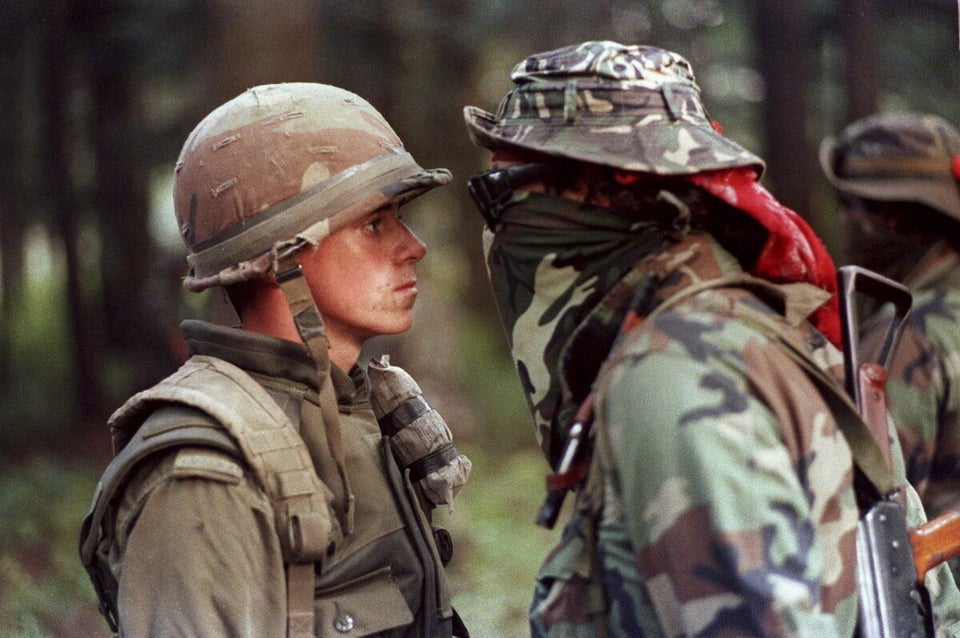The federal government's department of Aboriginal Affairs (AANDC) has informed 133 Ontario First Nations that it is cutting the National Child Benefit Reinvestment fund by over 50 per cent. The cut is scheduled to take effect in the current proposal cycle, 2014-15.
The cut was communicated April 22, 2014 in a letter sent by Peter Jones, AANDC Ontario Region. In this letter, the federal government notes the "growing cost of elementary-secondary education, Ontario Works, and other supports". $6M represents a cut of over 50 per cent from current funding levels. This has been confirmed with the AANDC Ontario Regional Office.
The tone of the letter suggests that First Nations children should be happy they are getting anything at all, "as poverty reduction remains an important goal."
WHAT PROGRAMS ARE AFFECTED?
The funding being cut supports programs in all First Nations communities that help First Nations children living in poverty. School nutrition programs, day care spaces, foodbanks, and other supports will be affected. AANDC lists 5 types of eligible programs:
Child Nutrition -- activities that improve the health and well-being of children by providing nutritional supports (e.g., school meal programs) and education to parents on family nutrition and meal preparation
Childcare -- so that low-income parents/guardians are able to gain access to day care spaces or have their share of child care costs reduced
Support for Parents -- activities that help parents/guardians support their children's healthy social development (e.g., parenting programs, drop-in centres)
Home-to-Work Transition -- for supports that reduce barriers to employment (e.g., transportation, uniforms), or activities such as training to increase employability (e.g., life-skills, summer work programs for youth).
Cultural Enrichment -- programming that supports the teaching of traditional culture
FIRST NATIONS CHILDREN NEED MORE HELP, NOT LESS
Last year, an independent study by the Canadian Centre for Policy Alternatives and Save the Children Canada based on Statistics Canada figures found that status First Nations children in Ontario -- those who would be affected by these cuts -- have a staggering poverty rate of 40 per cent, compared to 15 per cent for non-Indigenous children.
In other words, 2 out of 5 First Nations children in Ontario are living in poverty, and the First Nations child poverty rate in Ontario is over 2.5 times the non-Indigenous child poverty rate.
WHY IT MATTERS
The programs being cut are modest -- perhaps, in one sense, just a drop in the bucket. But they make a real difference to the children they serve. School food programs, day care programs, parenting programs, foodbanks and other supports are the last safety net for families with little to go on.
These programs will not survive, or will be severely scaled back, if the federal government follows through with these cuts.
WHY IS IT HAPPENING?
The reason given in the AANDC letter is that instead of responding to fully predictable cost increases in other programs with actual budget increases, AANDC is taking money away from poor children to pay those costs.
Education costs are increasing due to the historic legacy of deep underfunding in education and recent new funding announcements. Ontario Works costs are increasing because more First Nations are delivering the "employment assistance" component of this program, which helps social assistance recipients build skills and find jobs.
The federal government made a big deal about both these announcements: Income Assistance and Education. But how much of the funding is really new, and how much is coming off the backs of other cuts to First Nations -- like the cuts to the NCBR program to help poor children in Ontario?
First Nations child poverty has not been improved. So why is funding to support those children being slashed?
ALSO ON HUFFPOST:
